- Industry›
- Sports
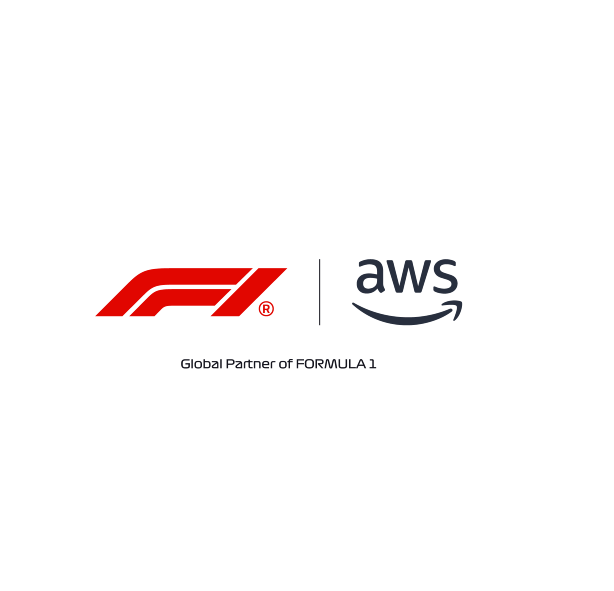
F1 on AWS
Explore new, unique, and innovative ways for fans to enjoy F1 through the power of machine learning, artificial intelligence and cloud technologies.
AWS x Formula 1®: Made for This
Watch as Scuderia Ferrari HP driver Charles Leclerc and seven-time world champion Lewis Hamilton design their own race tracks with AWS generative AI. See these legendary drivers discuss their favorite turns and explore how AI can be applied to motorsport.
How does AWS fuel Formula 1®?
✔ Transforming the sport: AWS’s broadest and deepest functionality and unmatched pace of innovation is changing how F1 collects, analyzes, and leverages data and content to make decisions. With 300 sensors on each F1 race car generating more than 1.1 million data points per second transmitted from the cars to the pit, F1 is a truly data-driven sport.
✔ Increasing Action on the Track: By using AWS high performance computing, F1 was able to run aerodynamic simulations to develop its next generation car 70% faster than ever before, creating a car that reduces downforce loss from 50% to 15%. This dramatic reduction offers the chasing driver a higher chance of overtaking and in doing so offers more wheel-to-wheel action for the fans.
✔ Engaging and Delighting Fans: With AWS, F1 has been able to turn millions of data points transmitted from cars and trackside into an engaging fan experience through its F1 Insights.
F1® Insights powered by AWS
Time Lost is the latest on-screen graphic from F1 Insights, powered by AWS. F1 Insights are a series of broadcast graphics that aim to transform the fan experience during each Grand Prix session. Time Lost will provide fans and broadcasters with a clear picture of the impact and cause of driver errors. This key insight is presented to fans via a TV graphic on the live F1 broadcast, which not only informs of the nature of a driver’s mistake, but also how much time the driver has lost as a consequence.
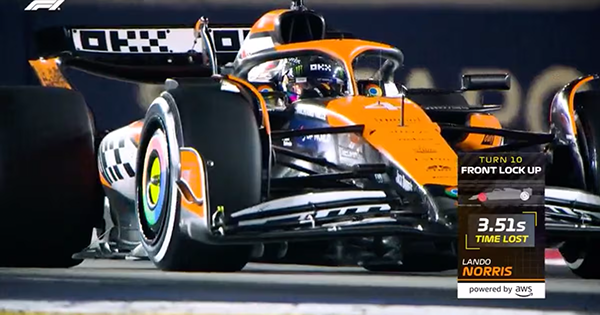
Powering real-time data storytelling
Track Pulse, F1’s latest collaboration with AWS, uses machine learning and generative AI to help the F1 broadcast team gain a clearer, more comprehensive picture of on-track action at any moment including live driver battles, championship predictions, top speeds, and more. The team can use these live updates to determine which elements to highlight for viewers while predicting what’s around the corner to anticipate unfolding stories.
Fuel generative AI innovation: lessons from sports leaders
Discover how leaders like Formula 1, the NFL & PGA TOUR use gen AI on AWS to enhance customer experiences, workforce productivity and process optimization. Leverage these real-world use cases to advance your gen AI journey.
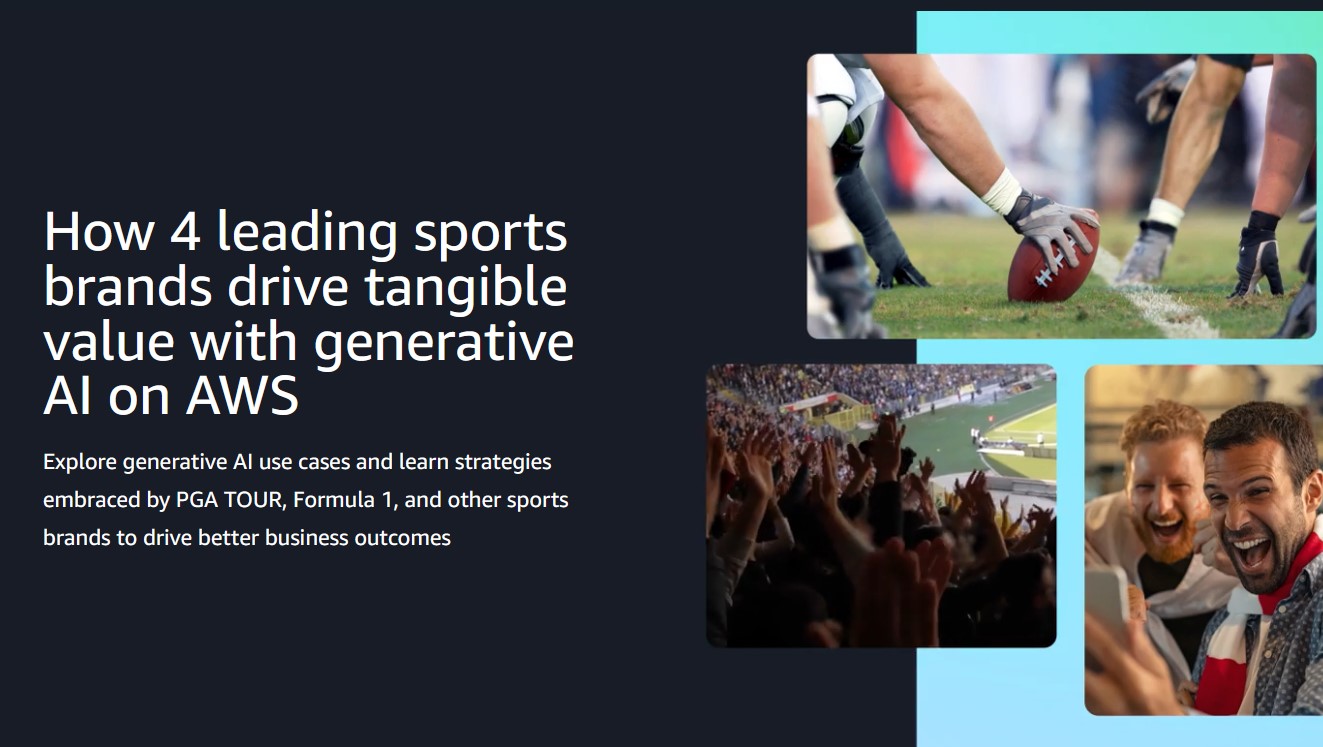
Formula 1®: Powered by AWS
Race data
Every F1 car contains 300 sensors which generate 1.1 million telemetry data points per second transmitted from the cars to the pits. This real-time data is combined with over 70 years of historical race data stored on Amazon S3 to extract rich insights that inform, educate, and enrich the fan experience and bring about more insight on the choice of race strategy that creates winning performances on the track.

Competitor analysis
Data analysis allows F1 to compare the performance of given cars, teams and drivers across any relevant parameter and rank them visually to educate fans.

Car performance
F1 looks closely at aerodynamics, tyre performance, power unit, vehicle dynamics, and vehicle optimisation to offer insights that help fans interpret overall car performance. Car performance is the principal KPI for an F1 team. It gives fans a unique insight into the inner workings of F1 and how the teams perform against each other in car development before and during season.
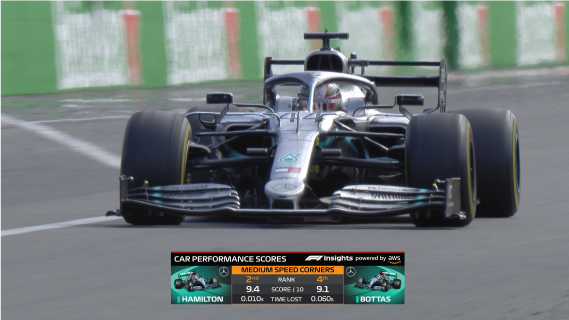
Fastest driver
Using AWS machine learning technology this insight provides an objective, data-driven ranking of all F1 drivers from 1983 through present day, by removing the F1 car differential from the equation to determine an age-old question: Who is the fastest driver? Data scientists from F1 and the Amazon Machine Learning (ML) Solutions Lab have for the first time in history created a cross-era, objective, complex, data-driven ranking of driver speed.
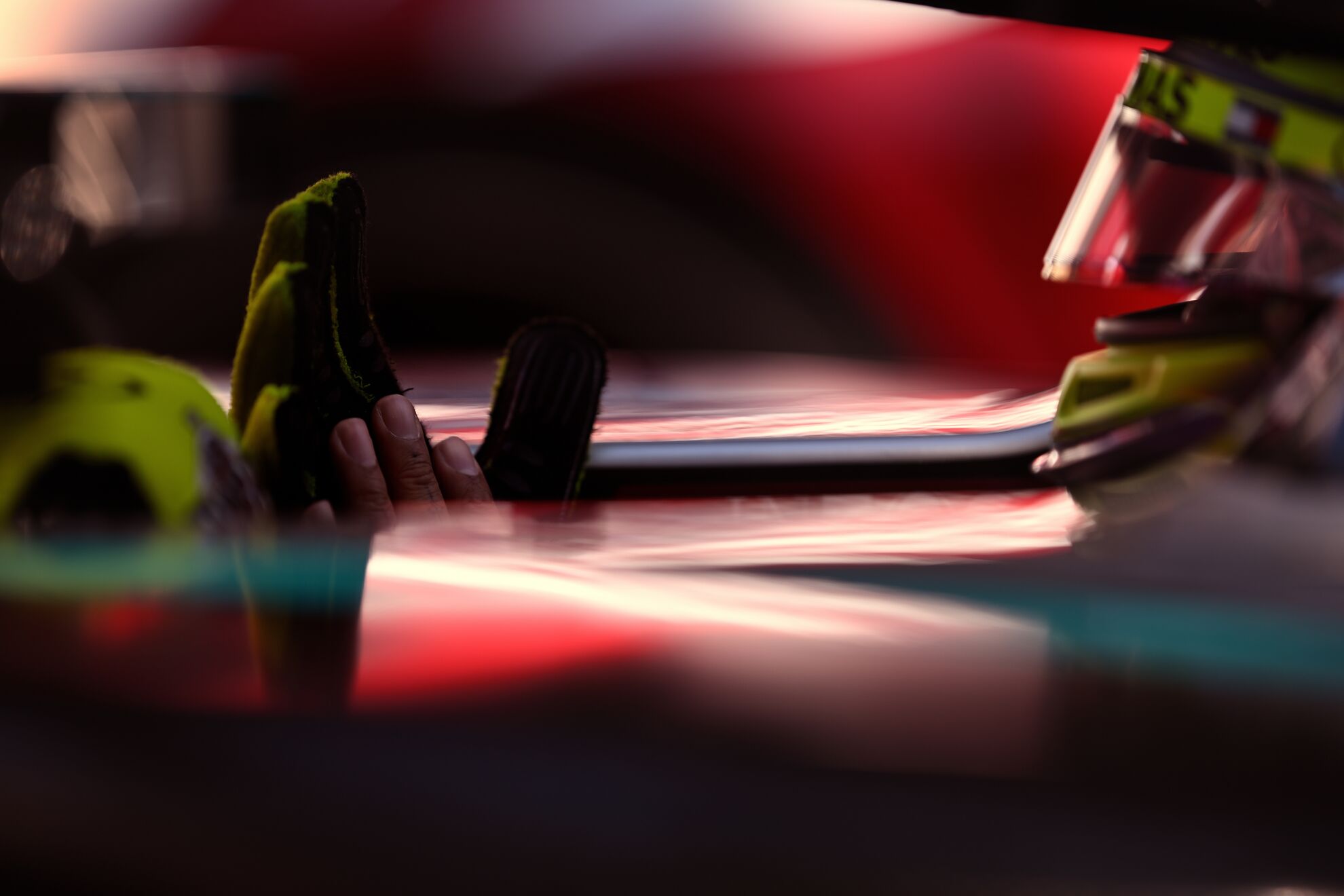
Race strategy
By using timing data, F1 is able to create visual insights that allow fans to objectively analyze individual team and driver performance, strategy and tactics that will impact the overall race outcome. For example, Alternative Strategy is a graphic that shows teams and their fans how races may have panned out had they made different strategic decisions.
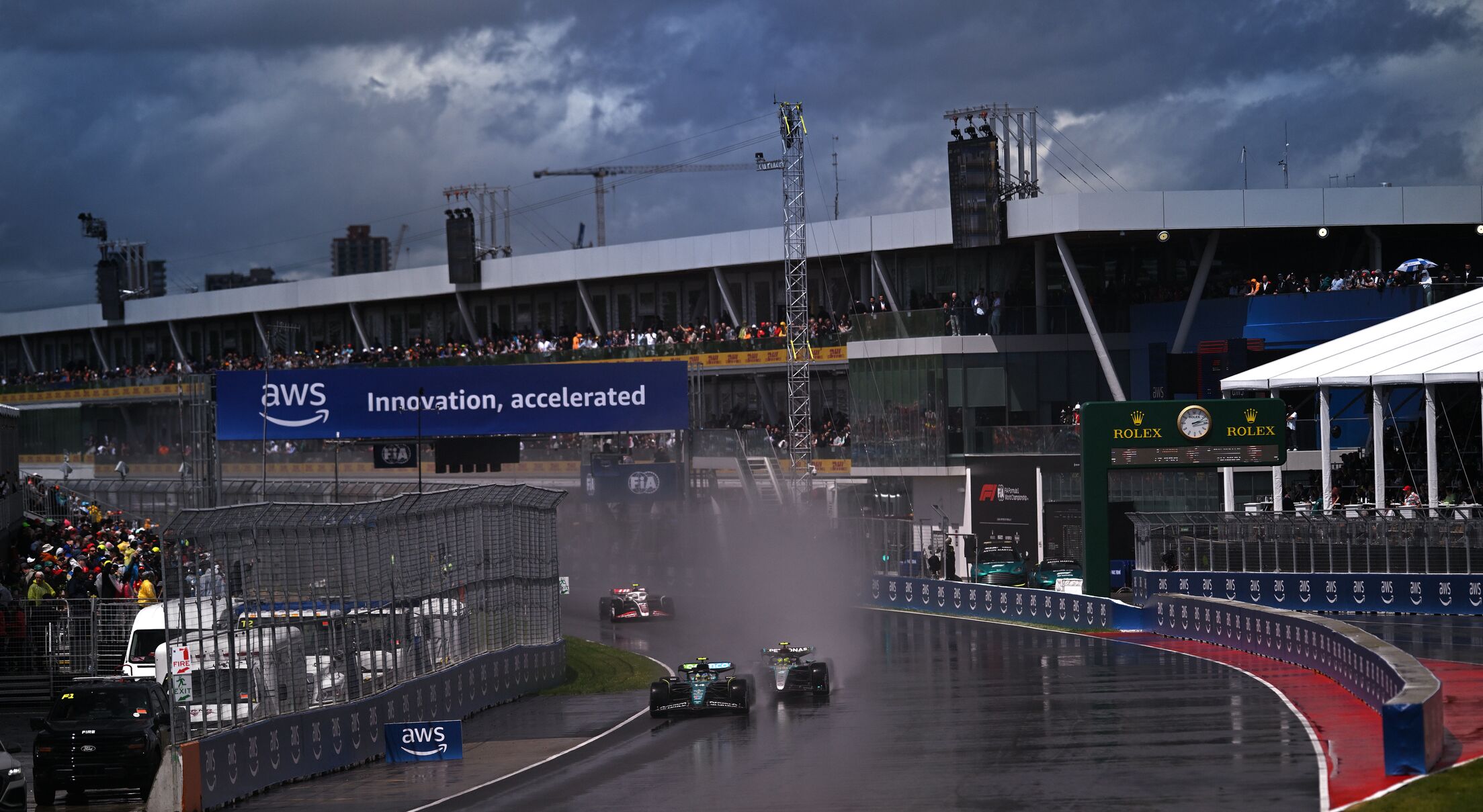
Engaging the fans
F1 Insights powered by AWS transforms the fan experience before, during, and after each race. By using distinct data points to inform each insight, F1 enables fans to understand how drivers make split-second decisions and how teams devise and implement race strategies in real time that impact the outcome of a race. Here are a few examples on how it all comes together.
Latest F1 on AWS news
Race Strategy
By using timing data, F1 is able to create visual insights that allow fans to objectively analyze individual team and driver performance, strategy and tactics that will impact the overall race outcome.
Using track history and projected driver pace, Battle Forecast will predict how many laps before the chasing car is within ‘striking distance’ of the car in front.
The Pit Strategy Battle graphic provides fans with additional insight into how to assess how successful each driver’s strategy will be in real-time. Fans will be able to track subtle strategy changes and see the impact on the final outcome.
Estimated pit stop windows based on tyre compound, lap times, and spread of cars. Viewers will see how a race can be altered based on race dynamics, including racing strategies of other teams, safety cars, and yellow flags.
Historical data is used to calculate race strategy during the formation lap, comparing predicted tyre and race strategies. This insight allows viewers to see when a driver should strategically make his next pit stop.
A successful ‘undercut’ can win you the race or gain a vital position. It is undoubtedly one of the tensest moments that the technical team have to face during the race. This graphic will bring fans closer into the world of the F1 strategist where these split-second decisions can win or lose vital championship points.
Competitor Analysis
Data analysis allows F1 to compare the performance of given cars, teams and drivers across any relevant parameter and rank them visually to educate fans.
This insight shows how teams develop their cars, how quickly they develop their cars, and what the on-track result is throughout the season. The development race both during the season and from year to year is the principal KPI for an F1 team, and this provides a unique insight into the inner workings of F1 and how the teams perform against each other in this area.
Close to the Wall provides fans and broadcasters a unique view of exactly how close an F1 car gets to the wall at some of the Championship’s most exciting corners. F1 calculates the distance from the wall of the closest part of an F1 car (usually the tyre) using special cameras and a fusion of deep neural network and computer vision algorithms. This is done using a four-step process of frame acquisition, car’s movement detection, trajectory estimation, and an output of the algorithm.
This insight isolates an individual car’s performance and allows fans to compare its performance to that of different vehicles head-to-head comparing building blocks that make up car performance – namely cornering performance, straight line performance and car balance or handling.
Driver Performance highlights which drivers are pushing their car to the absolute limit of performance in comparison to their teammates and competitors. Calculating the forces generated by a car’s tyres during a lap, and comparing it to the car’s maximum capability, this will show how much of the car’s potential performance is being extracted by the driver. Three parameters will be shown to highlight three key areas of driver performance that have a major effect on the ultimate goal - lap time: Acceleration, Braking, Corners.
This provides a breakdown of driver performance based on the most important subset of driving skills by analyzing a wealth of data across effects of the car, tyres, traffic, fuel, and more to a scored output of each driver's performance across the season against seven key metrics – Qualifying Pace, Race Starts, Race Lap 1, Race Pace, Tyre Management, Driver Pit Stop Skill, and Overtaking. These metrics are normalized using from a range of 0-10 to provide a ‘score’ style metric, and provide an insight for viewers, fans and teams alike into where a certain driver’s strengths and weaknesses lie and how they compare to others in the field.
Pit Lane Performance will provide fans and broadcasters an opportunity to dissect the whole of the pit stop event, to understand the time being lost and found from the moment the driver dives into the pit lane and exits the other end.
Car Performance
F1 looks closely at aerodynamics, tyre performance, power unit, vehicle dynamics, and vehicle optimization to offer insights that help fans interpret overall car performance.
Braking Performance shows how a driver’s braking style during a cornering maneuver can deliver an advantage coming out of the corner. This compares drivers’ braking styles and performance by measuring how closely they approach the apex of a corner before braking and will show how the car and driver perform together when cornering, such as top speed on approach, speed decrease through braking, the braking power utilized, and the immense G-forces drivers undergo while cornering.
The single most important area for performance for an F1 car and this offers great insight into how good cars compare against great ones. This breaks the corner down into the 4 principal sections – braking, turn in, mid corner, and exit – analyzing and comparing the performance through the principal sections of a corner via car telemetry data.
Analysis of cornering as determined by optimal braking and acceleration point around a specific (and crucial) corner, which is the area where each driver has the most to gain. This insight gives viewers a detailed understanding of the losses and gains on lap times and allows comparison between cars.
Using car data, namely car speed, longitudinal and lateral accelerations, and the Gyro, we are able to build an estimation of slip angles and then derive vehicle balance models for each car. This gives an output of tyre wear energy. (Note: tyre wear energy is not physical tyre wear but instead the energy transfer of the tyre contact patch sliding across the road surface.) The output gives us a tyre performance for each corner, which indicates how much the tyre has been used with respect to its ultimate performance life.
The Lap Comparison graphic contextualized the performance level of an F1 car for fans and broadcasters by comparing it’s lap times with that of the Safety Car and a ‘generic’ road car. The purpose and output of this graphic, will be to demonstrate through a data model, how superior F1 technology is compared to technology and performance a viewer will be more familiar with.
Watch now
Projected Knockout Time gives fans and commentators a ‘team-level’ insight into the time each driver is aiming for in order to make it through to the next qualifying session. Utilised in the latter stages of each session, this graphic’s target time will provide an exciting target for fans to map each drivers times against as they cross the line on their flying laps – ultimately bringing fans closer to the drama of the final outcome.